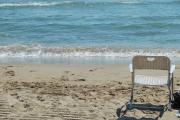

Subscribe to SCP News
Sustainable consumption and production in the Mediterranean

It is commonly recognized that the resource-intensive consumption and production patterns on which the current model of development is based can not be maintained. It has been estimated that we will require the resources of four planets to sustain these actual patterns by 2100. Moreover, this model of development relies on an energy system that is largely based on the use of fossil fuels – the main source of greenhouse gases causing climate change and a cause of international conflicts. Therefore, those unsustainable patterns of consumption and production must be redefined in order to move forward models of development that fit within the eco-system’s carrying capacity and are low-carbon.
In the Mediterranean region, shifting to sustainable consumption and production and thus decoupling development from environmental degradation and resource depletion becomes an urgent need due to the pressure that the economic development of the 21 regional countries is exerting on the local environment. This pressure is characterized and affected by water scarcity, population growth and rapid urbanization in coastal areas, growing waste generation, climate change and massive tourism.
It is clear that current consumption and production trends are the main causes of environmental degradation of the region. In this sense, the ecological footprint of each Mediterranean country, without exception, presents an ecological deficit, which means that the environmental capital of each country is spent faster than it is renewed.
Likewise, countries share common but differentiated responsibilities. Figures speak by themselves: France, Spain, Italy and Greece account for approximately 90% of the total Hazardous Waste generation (20 million tones) and 70% of total carbon dioxide (CO2) generation in the region; the highest quantities of plastic debris in the world (1,935 items/km2) are found in the seabed of the Northwest area of the Mediterranean sea, nearby the coasts of the France, Spain and Italy. However, despite existing differences between Northern Mediterranean countries (NMC) and Southern and Eastern Mediterranean countries (SEMC), as far as their contribution to the environmental degradation is concerned, statistics show a rapid growth in SEMC, both in terms of resource consumption trends (e.g. electricity consumption in SEMC may triple by 2025) and in pollution generation (e.g. waste generation will triple in SEMC while doubling in NMC). Concerning pollution generation, significant gaps of information are still hampering a comprehensive analysis of status and trends in SMEC. Nevertheless, pollution risks are expected to increase greatly in these countries, given the strong industrial growth projected for those countries to meet increasing demands due to population growth and rising living standards (e.g. steel production could reach 50 million tones by 2025 and cement production increase by more than 150%).
Therefore, a reversal of the trends endangering the social, environmental and economic stability of the Mediterranean region can only be effectively addressed if actions to change unsustainable consumption and production patterns are tackled in all Mediterranean countries.














